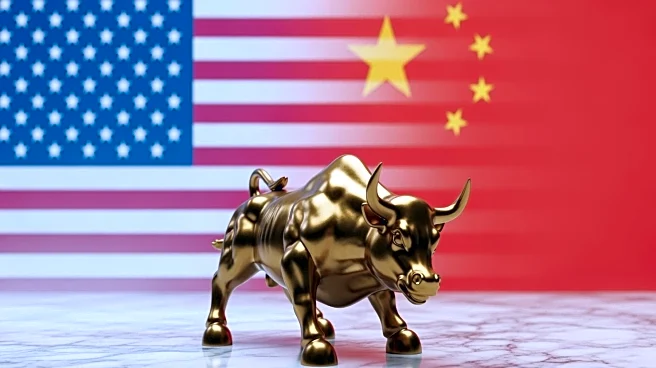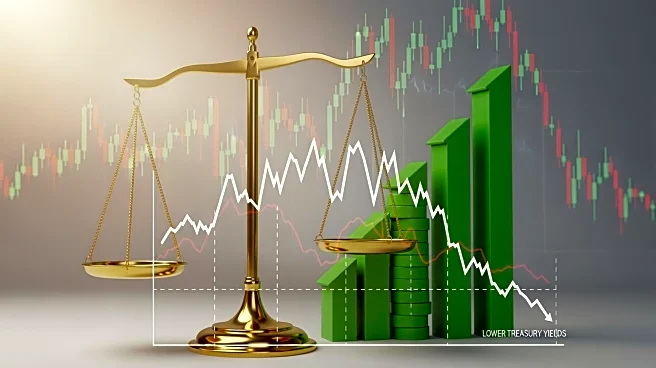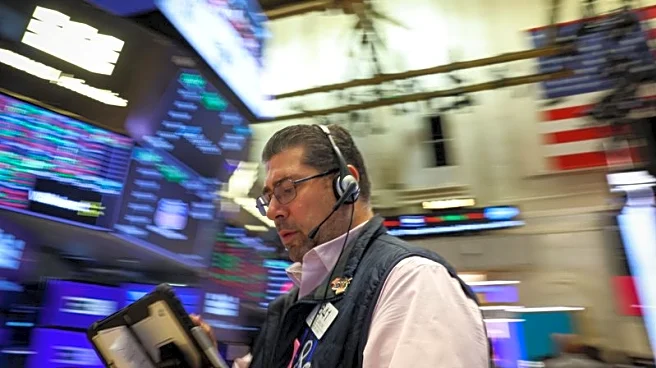What's Happening?
The U.S. stock market experienced a significant rally on Monday, with the S&P 500 Index closing up 1.07%, the Dow Jones Industrials Index up 1.12%, and the Nasdaq 100 Index up 1.30%. This surge was driven
by easing trade tensions between the U.S. and China, following President Trump's optimistic remarks about future relations with China. Additionally, strong Q3 earnings results contributed to the positive market sentiment, with 85% of S&P 500 companies beating forecasts. The rally was further supported by lower bond yields and positive economic news from China, including better-than-expected GDP growth and industrial production figures.
Why It's Important?
The rally in the U.S. stock market reflects improved investor confidence amid easing geopolitical tensions and robust corporate earnings. This development is crucial for U.S. industries as it suggests a potential stabilization in trade relations with China, which could benefit sectors reliant on international trade. The strong earnings reports indicate resilience in corporate performance, which may bolster economic growth and investment. However, the ongoing government shutdown poses risks, potentially affecting economic data releases and increasing unemployment claims, which could impact market stability.
What's Next?
Looking ahead, the focus will be on the continuation of Q3 earnings reports, with major companies like Coca-Cola, Tesla, and Procter & Gamble set to release their results. The market will also be watching for developments in U.S.-China trade talks, as well as the impact of the government shutdown on economic indicators. The Federal Reserve's upcoming meeting may also influence market dynamics, with expectations of a potential rate cut.
Beyond the Headlines
The rally highlights a paradox in the market, where positive stock performance contrasts with underlying economic uncertainties such as trade tensions and government shutdowns. This divergence raises questions about the sustainability of the market's optimism and the potential long-term impacts on economic policy and investor behavior.













